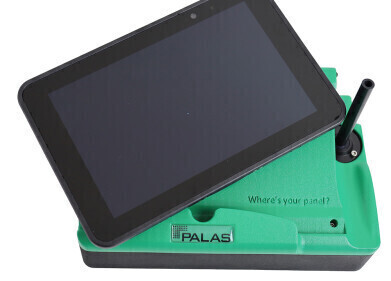Indoor air quality monitoring (IAQ)
Which Pollutants Affect Indoor Air Quality?
Jul 05 2021
In recent years, much has been made of the dangers of exposure to air pollution, especially in big cities and other urban environments. But despite the fact that indoor air quality has been proven to be up to five times worse than that found outside – and that most of us spend around 90% of our lives inside – indoor air pollution often flies under the radar.
So which pollutants should we be concerned about when it comes to indoor air quality? Where do they come from? And what steps can we take to limit our exposure to them? Read on to find out the answers to these questions and more.
Which contaminants are commonly found in indoor air?
The most prevalent forms of pollution in indoor air are particulate matter (PM), which are tiny particles of dirt and dust that are invisible to the naked eye, as well as a range of harmful gases. These include things like carbon monoxide, sulphur dioxide and nitrogen oxides. They’re often found in greater concentrations indoors than they are outside due to a lack of ventilation in interior environments.
Although our knowledge of the worst effects of indoor air pollution is still sadly lacking, initiatives like the INDoor AIR POLLUTION NETWORK are driving forwards indoor air quality research in Europe. This project intends to create comprehensive guidelines for which pollutants should be monitored, as well as how and where they should be measured. By creating a set of best practices and standards, the plan aims to provide a blueprint for all EU member states to follow.
Where do indoor air pollutants come from?
There are a multitude of different sources for the contaminants which we find around our home and place of business. Some of them enter from the outside environment, infiltrating our living spaces through open windows and doors and subsequently having no way to disperse. Others are created by anthropogenic activity within the house.
For example, many chemical cleaning agents contain harmful toxins that, when allowed to accumulate indoors, can prove damaging to human health. Similarly, the process of cooking food can produce a variety of pollutants in an unventilated kitchen. Other sources of indoor air pollution include the materials from which the building is constructed and how you heat it, as well as damp (if it is allowed to fester).
How can I mitigate my exposure to indoor air pollution?
Perhaps the most effective method of dispersing air pollution in the home is through adequate ventilation. Opening a window for a few hours a day – especially when it is raining outside – is an excellent to refresh the air inside your home. This is particularly important when you are engaging in an activity which produces contaminants, such as cooking or cleaning.
Other ways in which you can protect yourself from ambient air pollution indoors include the installation of a sensitive monitoring system, which can help you to stay abreast of the issue. Another tactic is to favour cleaning and cosmetic products which do not contain a high chemical content. If possible, opting for natural alternatives over ones with many additives is the ideal method of enhancing your indoor air quality, while plants can also serve as a natural cleanser of the airways in and around your indoor environment.
Digital Edition
IET 35.2 March
April 2025
Air Monitoring - Probe Sampling in Hazardous Areas Under Extreme Conditions - New, Game-Changing Sensor for Methane Emissions - Blue Sky Thinking: a 50-year Retrospective on Technological Prog...
View all digital editions
Events
Apr 08 2025 Birmingham, UK
Apr 08 2025 Targi Kielce, Poland
Apr 08 2025 Baku, Azerbaijan
Apr 08 2025 Bahrain
Apr 10 2025 Beijing, China



















